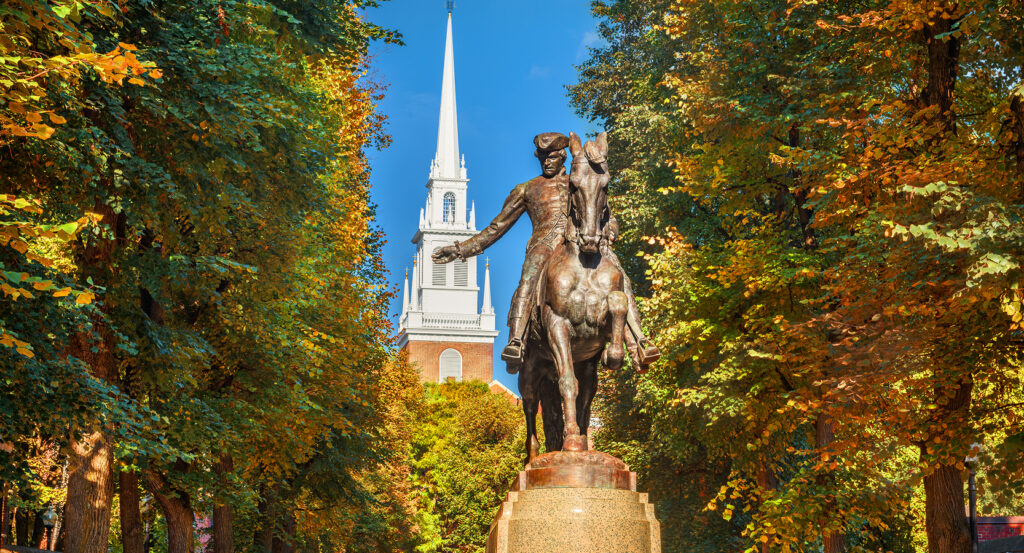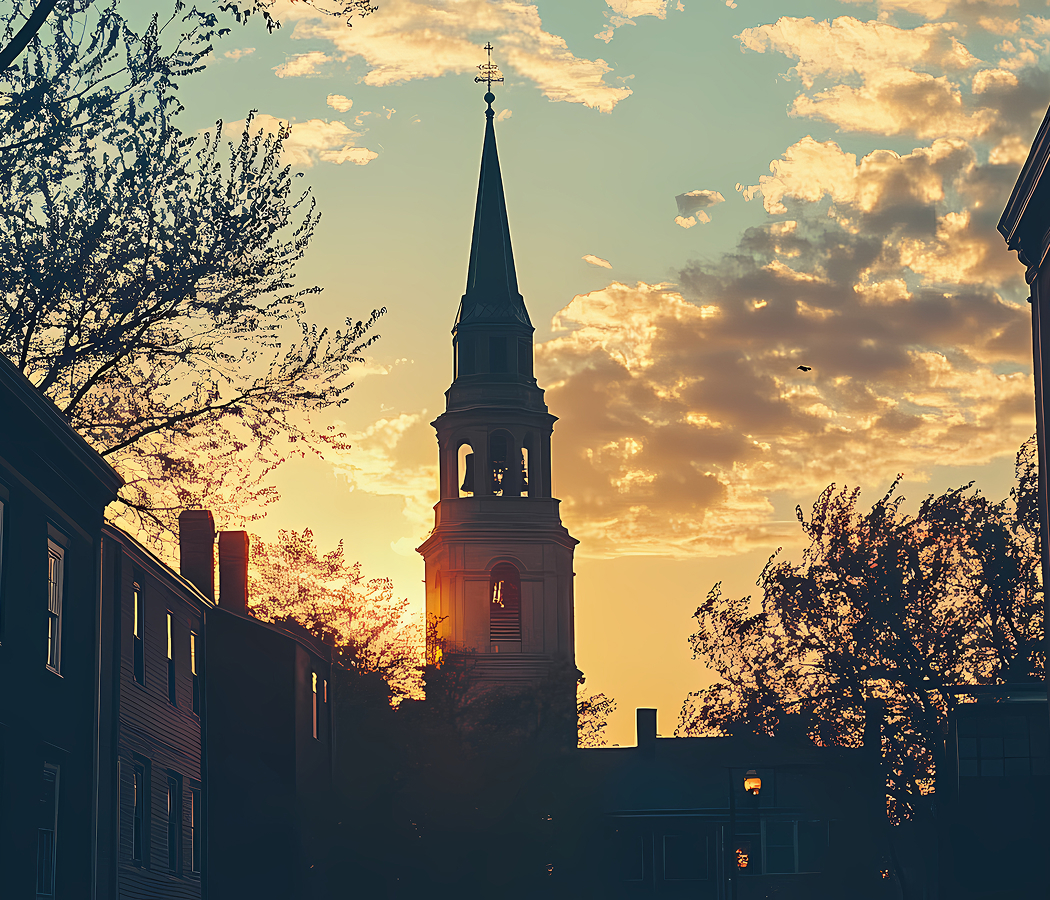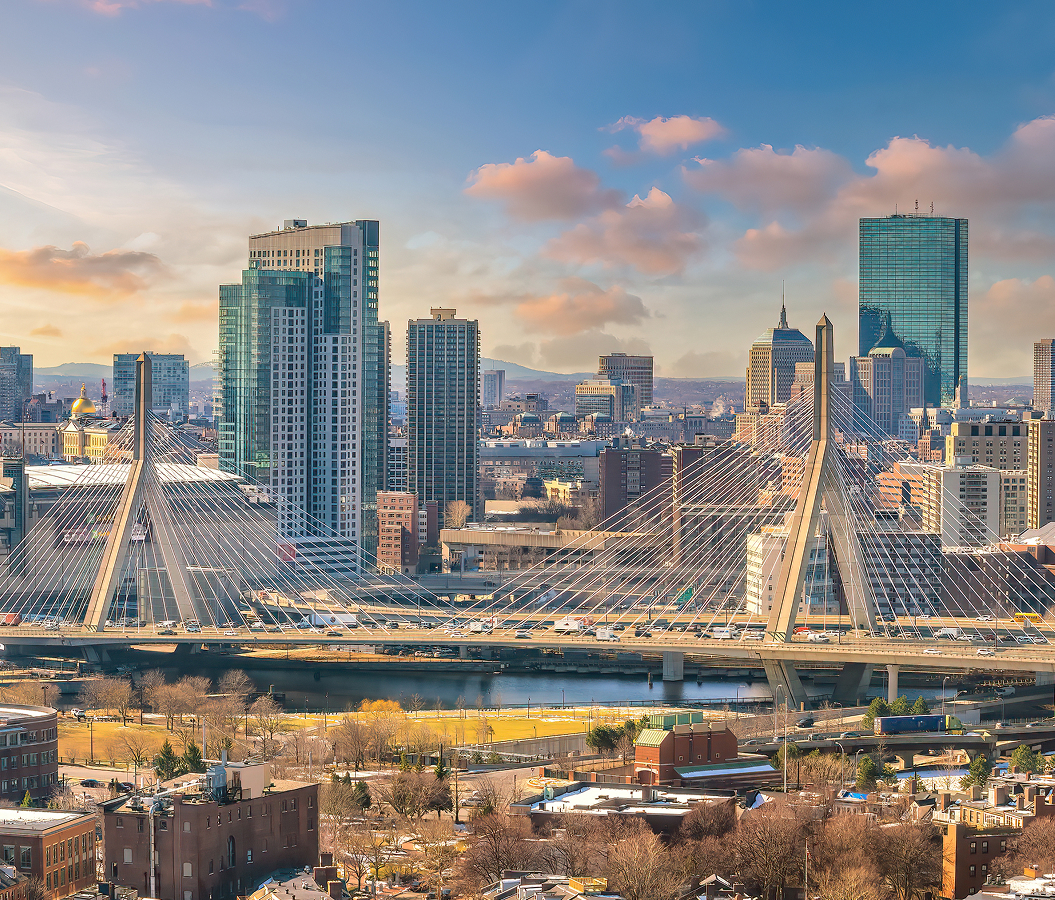
Why you should experience the Freedom Trail in Boston.
The Freedom Trail isn’t just a walk, it’s a living timeline of America’s fight for independence, stitched through the cobblestone streets of Boston.
Stretching 2.5 miles from Boston Common to Bunker Hill, the trail connects sixteen historic sites that collectively tell the story of a nation being born. You can feel the weight of history beneath your feet as you follow the red brick line past centuries-old churches, meeting houses, and burial grounds where revolutionaries once gathered and dreamed of freedom. The air seems charged with memory, from the echo of Paul Revere’s midnight ride to the quiet dignity of the Old North Church, each stop a reminder that liberty was not an inheritance but a pursuit. Boston’s skyline rises around it now, glass towers beside colonial façades, yet the trail bridges past and present with seamless grace. Whether you’re a history devotee or a first-time visitor, walking the Freedom Trail feels less like sightseeing and more like time travel, a step-by-step immersion into the heartbeat of American courage.
What you didn’t know about the Freedom Trail.
Behind its well-worn path lies one of the most visionary preservation efforts in U.S. history.
The Freedom Trail began in 1951, when local journalist William Schofield proposed linking Boston’s Revolutionary landmarks with a continuous walking route, a simple idea that sparked one of the nation’s first urban heritage movements. The project unified historic preservation and public accessibility, setting a precedent for how cities tell their stories. The red line itself, originally painted, now largely brick, serves as both guide and symbol, a literal thread of memory weaving through centuries of change. But what’s most extraordinary is how alive the trail remains: the Old South Meeting House still hosts debates and lectures; Faneuil Hall continues to echo with civic discourse; and the USS Constitution, the world’s oldest commissioned warship still afloat, sails as proudly as she did two centuries ago. The trail is more than a museum, it’s a dialogue between generations, reminding visitors that democracy isn’t static. It breathes, evolves, and demands participation.
How to fold the Freedom Trail into your trip.
To walk the Freedom Trail well, don’t rush it, let Boston’s rhythm carry you.
Start at Boston Common, America’s oldest public park, and follow the red line past the Massachusetts State House with its gleaming golden dome. Wander through the Granary Burying Ground, where John Hancock, Samuel Adams, and Paul Revere rest among crooked headstones that lean with age. Stop inside King’s Chapel or the Old Corner Bookstore, a quiet literary landmark once frequented by Emerson and Hawthorne, before arriving at Faneuil Hall, the “Cradle of Liberty.” Continue through the North End, where narrow streets open into Little Italy’s aroma of espresso and brick oven bread, then pause at the Old North Church to hear the story of “one if by land, two if by sea.” Cross the Charlestown Bridge to the Bunker Hill Monument, where panoramic views reward your climb. The trail can be completed in half a day, but it lingers far longer, each footstep echoing the ideals that shaped a nation, each landmark whispering that freedom, once kindled, must always be kept alive.
Hear it from the Foresyte community.
It’s basically Boston’s greatest hits album. Old buildings, big speeches, and a statue horse that somehow steals the show. Worth the miles.
Where meaningful travel begins.
Start your journey with Foresyte, where the planning is part of the magic.
Discover the experiences that matter most.












































































































